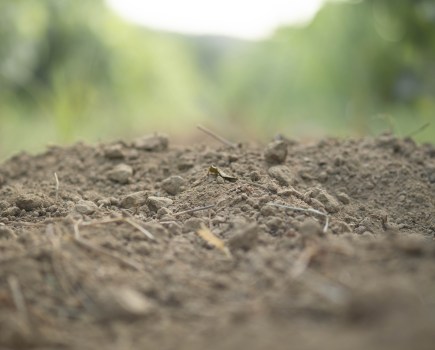Favourable weather and early bunch development means some growers may be able to produce premium still red and white wines this season. Hutchinsons agronomists Rob Saunders and Will Robinson explain how to turn that potential into a reality.
Warm, sunny conditions through spring and the first half of summer have led to a very early season so far, with flowering over in a few days, and many vines one to two weeks ahead of normal, at the time of writing.
Crucially, accumulated growing degree days (GDD) since inflorescences were first visible have been adding up quickly, with one site in Essex, for example, recording 61 GDD in the first week of July alone. Typically, UK growers average just shy of 1,000 GDD over the season, which is ideal for the sparkling market and still Germanic varieties, but this year, some sites could exceed that, creating an opportunity to produce still red wines.
Pinot Noir and Chardonnay generally need a minimum of 1,200, up to 1,400, GDD for still wine production, while Pinot Meunier is slightly less.
Much depends on the weather over the next couple of months, but there are things that can improve the chances of fulfilling this still wine potential.
1. Site and clone selection
While the prospects are generally very good, be realistic about what your site can deliver, and select the blocks and clones that are most likely to be able to produce a still wine, and manage those areas accordingly.
Often clones with smaller, compact, bunches are most suitable for still wine production. Burgundian clones, such as Pinot Noir 777, or Chardonnay 76, are particularly well suited, while Champagne blends (e.g. clones 112 and 126) are not, as they have been cultivated for colder, shorter growing seasons, usually with late bud burst and early ripening, meaning they can lose acidity quite quickly.
2. Manage canopies and crop load
Yield potential looks very good this season, and for those targeting still wines, bunches could be on the vine for three weeks longer than normal, so a healthy, productive canopy is essential. Canopies need to be vigorous and dense enough to capture sufficient light to support this year’s crop, yet still allow bunches to ripen fully. A rough rule is to aim for 14 leaves per bunch, but this will vary from site to site.
Pay particular attention to bunch zone de-leafing and late season nutrition to get the most from your crop.
Once into veraison, it is worth pruning out any later set, immature bunches as they will not ripen in time, and their higher acidity will drag down the overall average if picked with the main crop.
3. Control pests and disease
Equally important is pest and disease control, especially if bunches are to be left on vines for longer, at a time when acid levels are decreasing, sugar is increasing, skins become softer, and the risks from pests increase. SWD and wasps are two obvious pests to watch out for, but other insects, birds, and mammals all need considering. Disease-wise, maintaining an effective Botrytis control programme is essential during this time.
4. Monitor sugar and acidity
Once into veraison, there is typically 30-55 days to harvest, and it is important to start monitoring Brix once full colour change has occurred, as sugar levels can change quickly.
Indeed, managing the Brix-acidity balance could be more challenging in seasons like this, especially in varieties prone to acidity declining quickly, such as Bacchus. Generally, cool climate wines retain some acidity as Brix rises, but in warm conditions, acidity can fall faster, resulting in more sugar and less acid, thereby changing the flavour profile of the wine.
Brix is easy to measure using a refractometer, and acidity test titration kits are available to buy, but the process is more involved than Brix testing, so sending samples to the winemaker may be more appropriate.
It is worth noting that when grapes ripen, it is the acidic characteristics that typically come through first (citrus, herbaceous notes, etc), while leaving them longer allows the optimum phenolic ripeness to be reached, when the full characteristics of that variety are expressed.
With German varieties though, such as Bacchus or Müller-Thurgau, that sweet-spot is very close to the first ripeness level, so don’t leave bunches hanging too long, otherwise you risk losing the characteristics of the grape and end up with a flabby wine.
For more like this, sign up for the FREE Vineyard newsletter here and receive all the latest viticulture news, reviews and insight




